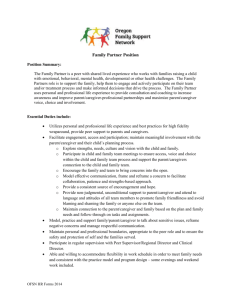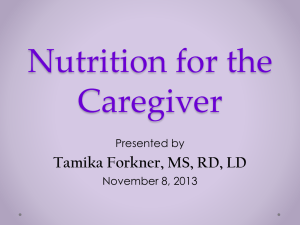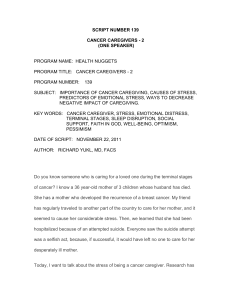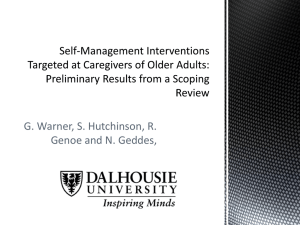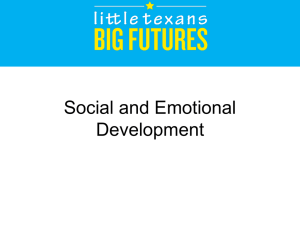Together in Care - The Program for Infant/Toddler Care
advertisement
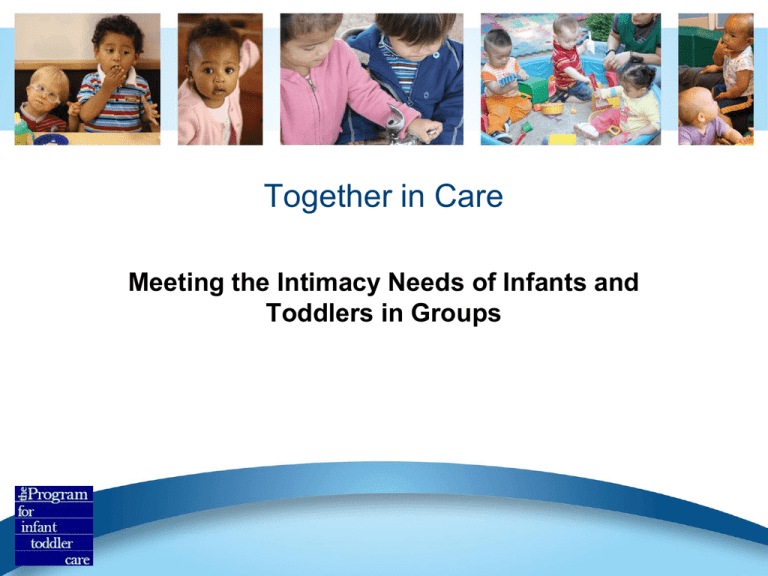
Together in Care Meeting the Intimacy Needs of Infants and Toddlers in Groups Together in Care Three program policies that lead to responsive, relationship-based care: • Primary Caregiver Assignments • Small Groups • Continuity of Care Why Primary Care? • The development of a loving relationship between a child and caregiver is at the heart of a high quality infant care. • Infants thrive when they share a strong bond with a person who cares for them day after day. What is Primary Care? Each child is assigned to one caregiver who is principally responsible for that child’s care. Primary care is not-exclusive care. Other caregiving team members provide support when needed. Primary Care: • Works best when caregivers function as a team. • The primary caregiver does most of the caregiving routines & communicates with the parents. • Other team members step in when the primary caregiver is busy with another child or when the primary caregiver is out of the room. Benefits of Primary Care: • Primary care benefit both children and caregivers. • The deeper the relationship between caregiver and child, the more enjoyable their time together will be. Small Groups: • Simply stated, the total number of children in one caregiving space should be limited. • Recommended group sizes: – young infants groups should not exceed 6 – mobile infant groups should not exceed 9 – toddler groups should not exceed 12. Small Groups Promote: • Personal contact between children. • Quiet exploration and one-to-one attention from a caregiver. • Children being able to focus because there are fewer distractions. • Caregiver flexibility to manage the needs of all children. Group Sizes (same-age groups) Age Ratio Total Sq. Feet 0-8 1:3 6 350 8-18 1:3 9 500 18:36 1:4 12 600 Mixed-Age Group Size Age Ratio 0-36 1:4* Group Size 8 Sq. Feet 600 * Of the four infants assigned to a caregiver, only two should be under 24 months of age. A critical aspect In child care, much more attention has been given to ratios than to group size or space requirements, but appropriate ratios alone will not ensure quality. Strategies to Support Small Groups • Redesigning space to give small groups of children their own space while still sharing plumbing with another group. • Build 4-6 foot walls to divide a large room into smaller rooms. • Using furniture or room dividers to keep children in separate small groups. More Strategies… • Use small tables at mealtimes with three or four seated with one caregiver. • Follow individual schedules. • Use developmental barriers to divide up outdoor areas. Continuity of Care “Whatever stage the child is in is important and exciting. If caregivers follow a child from the beginning to the time the child leaves the child care program, the job is much more complete, both for themselves and for the child.” - Yolanda Torres Continuity of Care • With continuity of care, the child stays with the same caregiver and peer group for the first three years or the full time the child is enrolled in the program. • Continuity allows children to experience a stable, long-term relationship not only with their caregiver but also with each other. Continuity of Care • Requires planning and can be implemented in three possible ways: Same Age Continuity Mixed Age Continuity Family Child Care Management Strategies: • Schedule overlapping shifts in order for caregivers to communicate with each other. • Organize staff schedules to allow primary caregivers to meet with parents and each other on a regular basis. • Building in time for caregivers to prepare and plan their work with children. The combination of… “… primary care, small groups, and continuity of care will go a long way toward making child care the intimate place it should be.”


